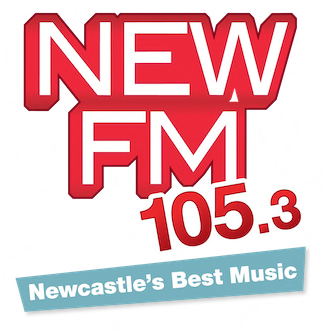A Musical Point of Difference

In a previous article (How to Win the Ratings – Taste & Mood) I wrote about how playing the best music for your target audience’s taste can take you to the top of the ratings. The problem is a competitor with the halo of a powerful breakfast show can be perceived as doing a better job of catering to your audience’s musical desires. You then have to exaggerate your point of difference. A differential advantage that is measurable.
I first learnt about the importance of product differentiation when I read Al Ries & Jack Trout’s famous marketing book, Positioning: The Battle for Your Mind.
As Al Ries & Jack Trout say, ‘What you want to do has no bearing, it’s what you can do. When you launch a new idea you must ‘dramatize it’.
As former Austereo Group PD, Jeff Allis used to say, “Better doesn’t win, different does.”
How do you accurately define your station’s musical point of dfference?
As Paul Amos from Xtra Research previously explained “real music clusters are built by listeners rating individual songs of all musical types. They form ‘naturally’ when based on statistical relationships between every song. Yes, cluster studies are scientific, but they need to be for the results to be genuine.”
“We compile a list of well-known songs that represent all the different music styles played on popular radio in your marketplace in terms of era and type. We then conduct, what is in essence, a music test with hundreds of listeners in your market. From those results we examine every single response and the similarities.”
“What are the Benefits? It identifies your biggest opportunities and becomes the foundation on which you build or re-launch your radio station.”
1. Discover critical clusters for your market.
2. Find out how big they are
3. Who’s winning them
4. What your station’s natural predisposition is
5. What can you steal from your competitors
As researcher, Eriks Celmins points out in his excellent Radio Today article, Research Decoded #1: The Psycho Word. In music radio the most common psychographic approach, is a music lifegroup or cluster question. Asking how often a person prefers hearing a music style, as defined by a short montage of typical songs.
This can also help define an ideal music mix out of the most compatible montages.
But at a time of tight format competition, the more clearly you understand and define your target, the more you can differentiate your brand, even in subtle ways.
While research is often, and mistakenly, seen as dry, and all about numbers, psychographics is a creative activity.
It’s about finding innovative ways to paint vivid, emotional pictures of your listeners, with all-round benefits for strategy, content, branding, marketing and sales.
At the same time defining what’s different about them, compared to others of a similar age and socio-economic background. Because that will drive your point-of-difference, and make you stand out from the pack.
U.S. Programmer Tracy Johnson is world-renowned for his work with breakfast shows in many different countries. Radio Ink Magazine named Tracy as the Best Program Director in America on three occasions.
What many people forget is the incredible success he had turning San Diego’s B100 into Star 100.7 & winning the ratings without a strong breakfast show. He later enticed Jeff & Jer to come & join him placing Star 100.7 in a dominant position.
In such a competitive market as San Diego, Tracy realised that he had to come up with a powerful musical point of difference.
Greg Smith: Could you lay out for us how you identified the hole in the San Diego market & developed the Hot AC or Modern AC format.
Tracey Johnson: We found a unique music position by focusing on our audience, rather than the music industry or radio competitors.
At the time (1994-95), pop music in San Diego had been greatly influenced by alternative bands like Nirvana, Smashing Pumpkins, Pearl Jam, Red Hot Chili Peppers, Sting, etc. At the same time, pop music was weak. There just wasn’t much exciting in the pop world that appealed to a 25-34 year old woman.
We realized that adults were excited by this new alternative genre, but only select songs that were accessible. Around this time, Sheryl Crow’s All I Wanna Do was breaking. It seems crazy today, but Hot AC stations back then were AFRAID of this song. They wouldn’t touch it. It was too edgy. We were all over it.
We also recognized that there was a large body of music from the 80s that weren’t being played in the market, and a large percentage of those songs were highly compatible with this new alternative/pop flavour of music. And it was FUN (and familiar) music from bands like The Cure, REM, B-52s and Depeche Mode, along with one-hit wonders that fit. So, Star 100.7 embraced this music and built on it as one of the pillars of our music position.
We considered our station a pop music station for adults. Our exact music position (internally) was “A pop music station for adults who live a young, active lifestyle but don’t want to be challenged by the extremes.” To us, this statement said it all. Everything went through this filter as follows:
Pop music station: We weren’t rock, or soft, or too cool for the room. We knew who we were. A mainstream station. As a result, we never considered ourselves competing with any of the rock or alternative stations (there were two alternative stations then). And, most importantly, we didn’t take ourselves too seriously.
For adults: 25-plus only, which kept us from chasing the newest, hippest, coolest thing. We weren’t influenced by new trends, unless those trends influenced our adult audience. And as an adult-targeted station (primarily 25-34 females), the familiarity and memories of that 80s library was key.
Young, Active Lifestyle: This kept everything up-tempo and fun. We carefully scrutinized ballads. In fact, we penalized slow songs by 10% when voting our music research. If it scored a 4.5, we knocked it down to a 4 (10% penalty for being slow). This was usually enough to drop a song by a category, and it kept the weaker of the slow songs OFF THE AIR ENTIRELY. The station had a very up-tempo vibe.
Not challenged by extremes: This kept us from being too rock or too aggressive. It was a governor that kept us consistent.
As we moved in this direction, there was a lot of music that sounded out of place, and gradually were weaned from the station. Billy Joel, Mariah, Whitney, Phil Collins, Elton John, etc. had hits at the time, but didn’t hold up well on Star. We weren’t ignoring those artists, but they just didn’t fit like they once did.
With that strategy, we also got really lucky. More and more alternative pop music was crossing over (Matchbox Twenty, Hootie & the Blowfish, Melissa Etheridge, Jewel, etc.) and our audience loved it:
About 1/3 of our music was current/recurrent, much of it alternative flavoured pop that wasn’t cool enough for the alternative stations, too rock for the CHRs, and too hip for the other AC stations
1/3 was recent gold from the early 90s, mostly alternative pop that the alternative stations were no longer playing, but their older listeners still LOVED.
And 1/3 was from the 80s, all familiar and all fun that nobody else would play.
Musically, we had it all. We positioned it as “The 80s and 90s are ON….Star 100.7″
The other key element, though, was the personality. The station had a vibe that transcended the music and made it all make sense. The imaging, personalities, etc. were so closely integrated into one unique package. I’ve attached a few music promos from 1995 for you here. 3 of these are music image, and one is focused on new music. Listen to how the personalities are integrated and the production is fast, but very clear-and exciting-and FUN.
Tracy can be contacted here.
Radio stations in competitive markets should conduct a format search or cluster type study at least once a year. Sadly in a lot of cases this doesn’t happen because of budget cuts. MIX formats are under pressure from narrower focussed stations as demonstrated by the recent Hobart & Gold Coast ratings. A cluster study or format search will tell you whether you can still play AC/DC, The Angels & Mariah Carey on the same station. Is it a case of overdosing on music variety?
Questions that you need to keep asking.
What kind of defensive moat have we put around the brand?
What do we stand for?
How are we unique?
What word or phrase do we own?
Jack Trout sums it up best with his book, ‘Differentiate or Die’

Greg Smith is an inductee into the Australian Radio Hall of Fame, and a Director of Radio Today.


